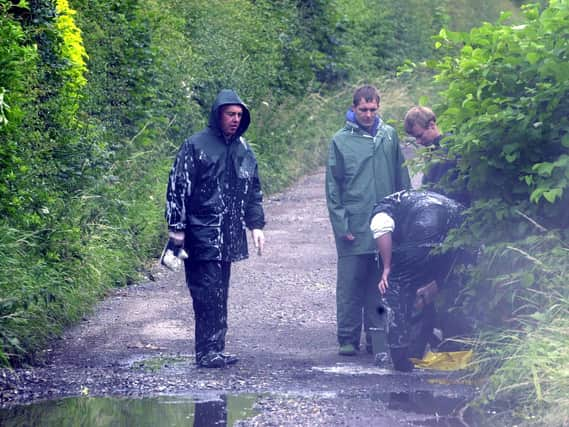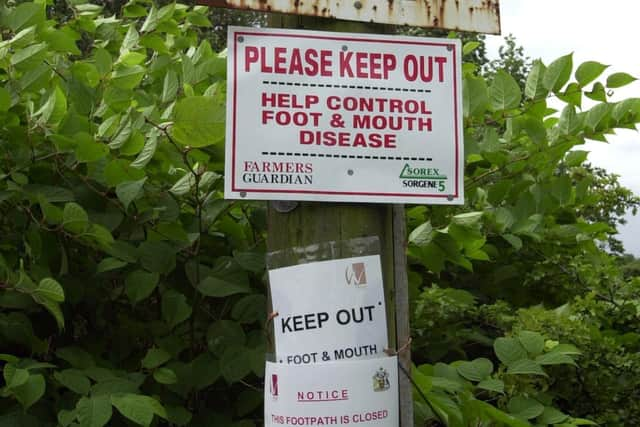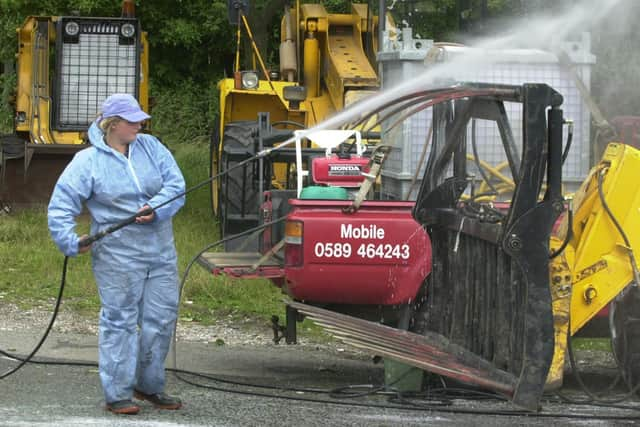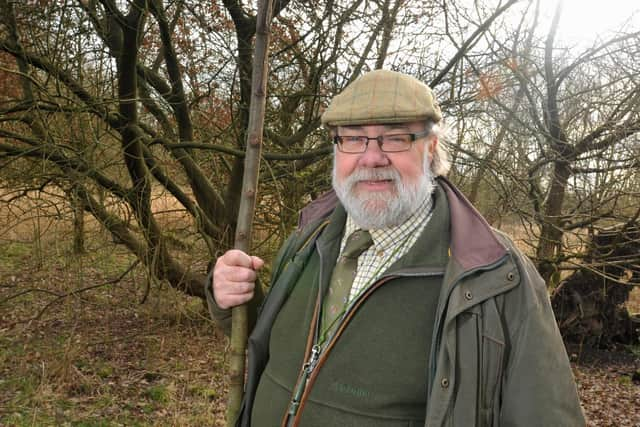Remembering the horror of foot and mouth disease 20 years on


Millions of cows and sheep were slaughtered in the attempts to contain the disease as it raged across Britain in 2001.
It left a trail of devastation behind it and the images of massive, reeking pyres of carcasses were seared into the memories of those who witnessed them on the news.
Advertisement
Hide AdAdvertisement
Hide AdWigan was affected by the outbreak, with one of more than 2,000 confirmed cases happening at a farm in Abram.


It was also feared the disease had struck at a site in Haigh, but closer testing and examination revealed it was a false positive.
For those working and living in the countryside locally the disease had a massive impact, as draconian precautions to prevent foot and mouth in the borough were rolled out.
It is a time Graham Workman, who was then the countryside manager at the local authority based at Haigh Country Park, remembers all too well.
Advertisement
Hide AdAdvertisement
Hide AdAs the country battles another serious disease 20 years later, this time one which affects humans rather than animals, Mr Workman says it is interesting to think of how lives were restricted throughout the spring of 2001 compared to the measures put in place around the novel coronavirus.


He said: “It was a scary time. We were isolated here at Haigh when they thought there was a suspected case at a local farm, although it turned out to be a false positive.
“Only residents were allowed to access the site and there were only about six people allowed in the woods for a while. We had to disinfect the wheels of vehicles on all the entrance roads.
“They were like speed bumps made of straw, about five metres long. We had to pour the disinfectant on it and we were doing that every week.
Advertisement
Hide AdAdvertisement
Hide Ad“There were signs up saying no entry on all the roads around Haigh and we had to move barriers if we wanted to get in and out. It was a stricter lockdown than this pandemic, people couldn’t walk in the countryside.


“We had meetings with Defra just in case the deer in the woods caught it so we would know what to do and what we were looking out for.
“Thankfully Wigan wasn’t too badly affected but when you saw the funeral pyres with thousands of sheep and cattle it was really quite upsetting. People were saying the smoke from the pyres was absolutely awful.”
Foot and mouth disease was spread through cattle, with transportation to sites such as cattle markets identified as a key factor, and the Government imposed an absolute ban on movement of sheep and cows around the country as they tried to stamp it out.
Advertisement
Hide AdAdvertisement
Hide AdAll animals located near an infected farm were culled and then burned.
Restrictions and widespread disinfecting regimes were put in place as the disease could be carried by staff on their boots and clothing.
For the farming sector this proved to be a devastating year, with the final economic toll of the outbreak reckoned to be around £8bn.
Mr Workman said: “I think quite a few farms went out of business and even if ones didn’t have the disease there was quite an impact on finances.
Advertisement
Hide AdAdvertisement
Hide Ad“If you were raising cows for beef you couldn’t move them on but you still had the costs of feeding them and keeping them.
“It was so contagious. Once one animal in a herd had it they all had to go.
“These were people’s livelihoods too. If a whole herd or flock of pedigree animals such as milk cows were destroyed then you were looking at thousands of pounds to start again from scratch.”
Culling teams in full protective suits carrying out killings of infected farm animals and then hosing down their equipment became a common sight, including at Chadwick’s Farm in Abram.
Advertisement
Hide AdAdvertisement
Hide AdPublic rights of way were curtailed, major sporting events including horse racing festivals and motorsport championships were cancelled and the general election was even moved to another date.
The outbreak was at its height from mid-February until April, when it was announced the disease was “totally under control”.
However, the final case in Cumbria was not reported until the end of September and the last cull happened on the first day of the following year, with some restrictions only being lifted in 2002.
Mr Workman has now retired from his position at the local authority but continues to work at his ecological consultancy Whistling Beetle.
If you value what we do and are able to support us, a digital subscription is just £1 for your first month. Try us today by clicking here and viewing our offers.